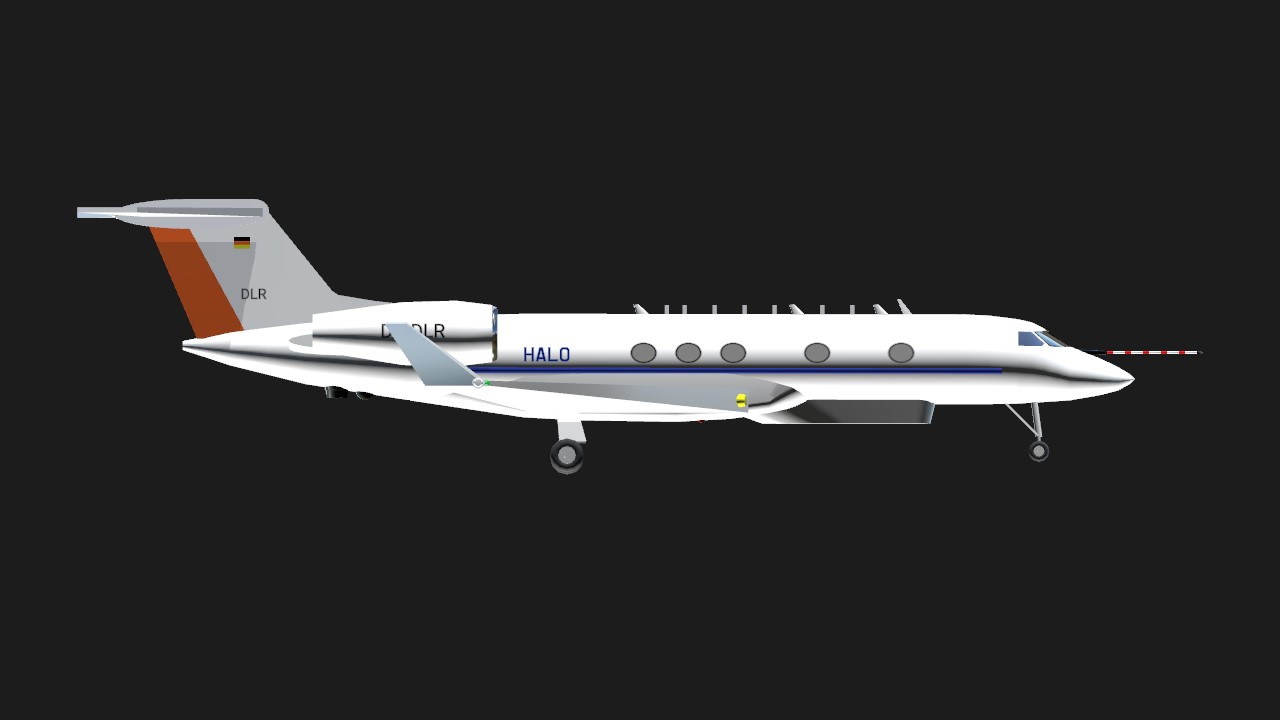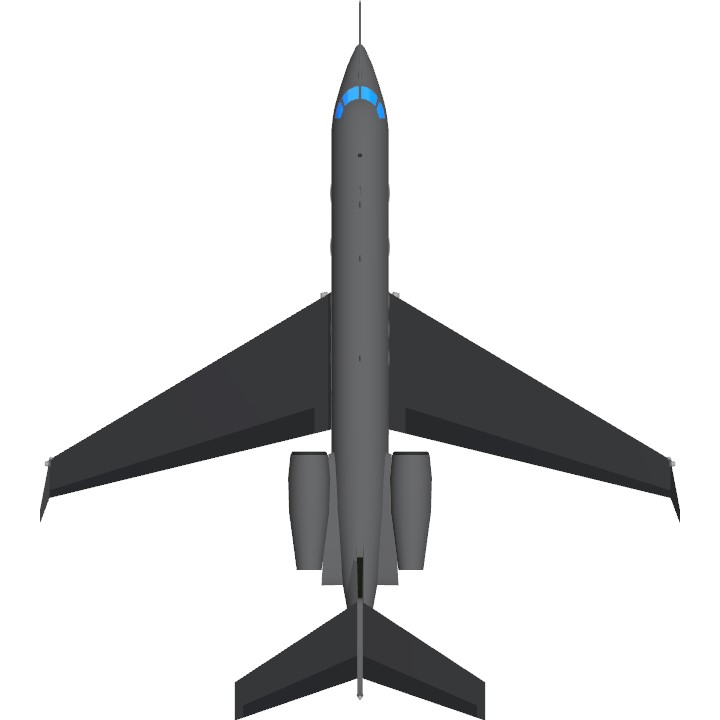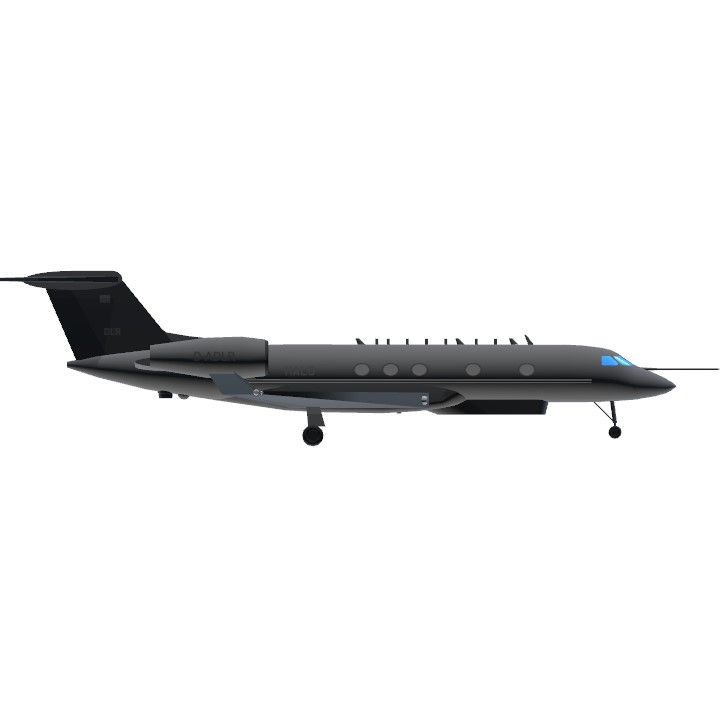Here is a simple but detailed replica of one of my personal favorite Gulfstream G550s, HALO.
Very Long Description (courtesy of DLR): The High Altitude and LOng Range Research Aircraft (HALO) is based on a Gulfstream G550 ultra long range business jet. With a range of more than 8000 kilometers, measurements on the scale of continents are possible; the research aircraft can reach all regions, from the poles to the tropics, and remote areas of the Pacific Ocean. The combination of range, cruising altitude, payload and comprehensive instrumentation make the aircraft a globally unique research platform. The HALO project was made possible by the Max Planck Society, members of the Helmholtz Association of German Research Centres and various other scientific institutes in the atmospheric research sector. In total, 31 research institutes are involved in the project.
The need for a high-altitude long-range research aircraft was first established in the 1980s. At that time, few aircraft for high altitude experiments were available in Europe; notable among them, DLR's Falcon 20-E. In the year 2000, representatives of major German research institutes in the atmospheric and climate research sectors came together to develop a concept for future atmospheric research using aircraft. The result was a unanimous vote for a high altitude aircraft with a long range and large payload capacity.
In 2001, the Max Planck Society and DLR, on behalf of over 30 research institutes in Germany, submitted a proposal for such an aircraft to the German Federal Ministry of Education and Research (Bundesministerium für Bildung und Forschung; BMBF). In the subsequent review of the project by a science council appointed by the German federal and state governments, HALO was categorised as worthy of unrestricted support. In the autumn of 2004, representatives of the BMBF, the Helmholtz Association of German Research Centres, the Max Planck Society, the Jülich Research Centre, the Karlsruhe Institute of Technology, DLR and the Free State of Bavaria agreed to jointly finance the construction of the HALO research aircraft. This opened the way for the delivery of HALO. In February 2005, DLR and the Gulfstream Aerospace Corporation signed a contract to jointly finance the construction of the HALO research aircraft.
HALO was procured from funds from the German Federal Ministry of Education and Research (BMBF), HGF (Helmholtz Association of German Research Centres) and the Max Planck Society (MPG). Operations are managed by the German Research Foundation (DFG), Forschungszentrum Jülich, Karlsruhe Institute of Technology (KIT) and Leibniz Institute for Tropospheric Research (TROPOS), Leipzig. DLR also owns and operates HALO.
If you’ve read this far, here’s a trophy: 🏆
Specifications
Spotlights
- MAPA 1.4 years ago
- sprunkigetfunky 1.4 years ago
- XProAerospaceAircrafts 1.4 years ago
General Characteristics
- Predecessor Gulfstream G550
- Created On iOS
- Wingspan 137.0ft (41.7m)
- Length 154.0ft (47.0m)
- Height 38.2ft (11.6m)
- Empty Weight N/A
- Loaded Weight 32,494lbs (14,739kg)
Performance
- Power/Weight Ratio 4.149
- Wing Loading 20.7lbs/ft2 (100.9kg/m2)
- Wing Area 1,571.7ft2 (146.0m2)
- Drag Points 11580
Parts
- Number of Parts 121
- Control Surfaces 7
- Performance Cost 583







Great work
Found this in the Newest, time to upvote and spotlight